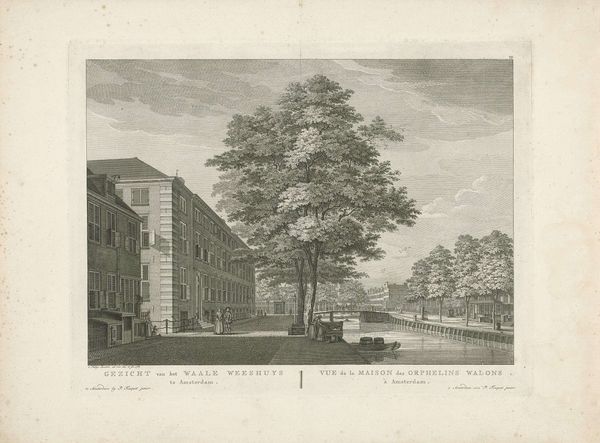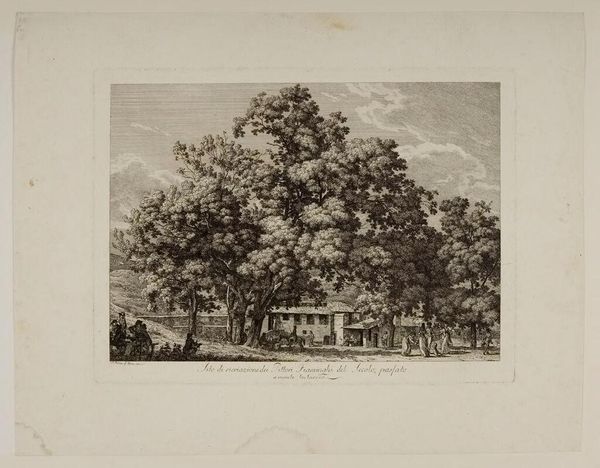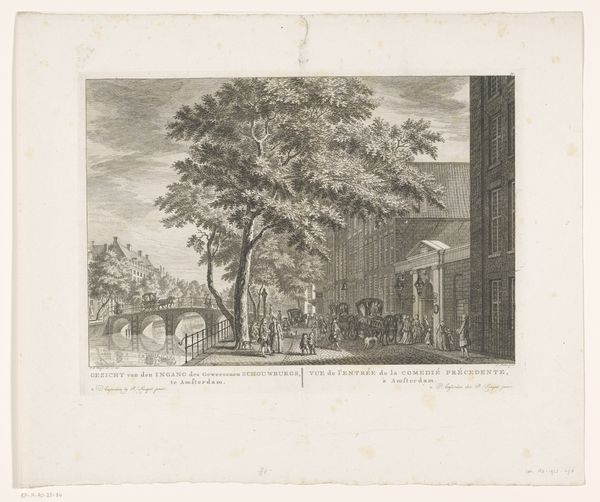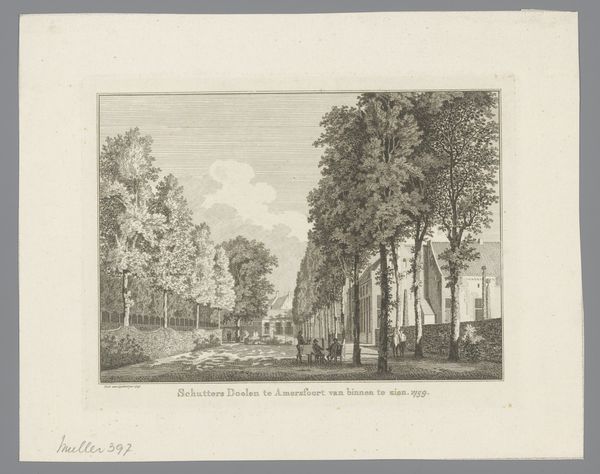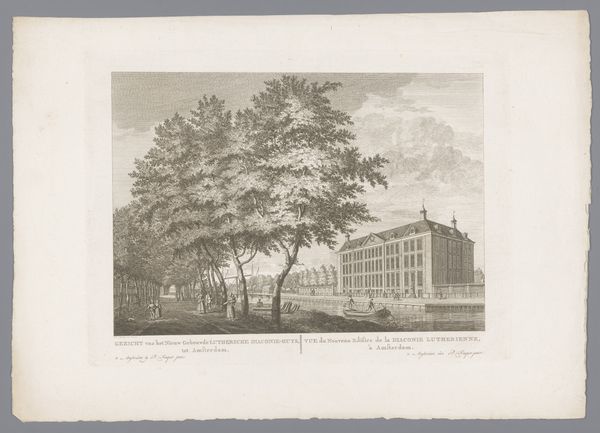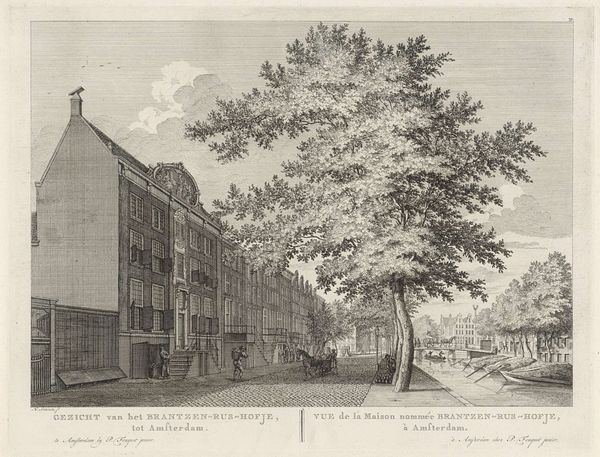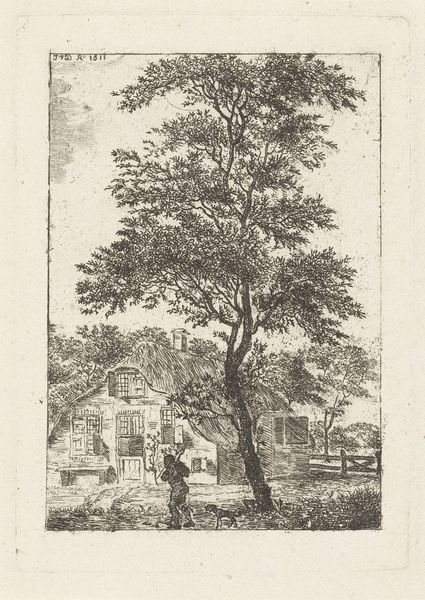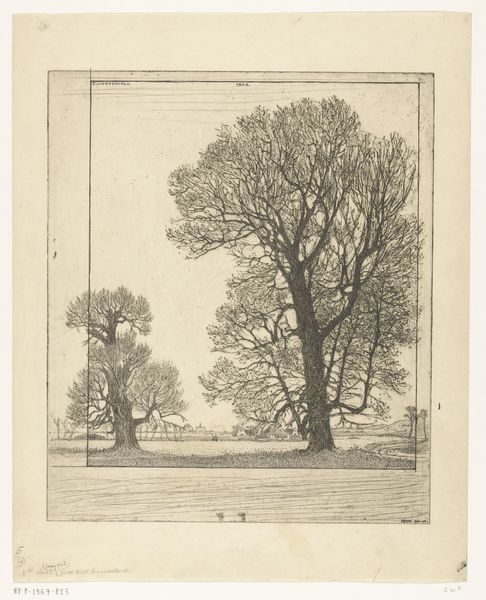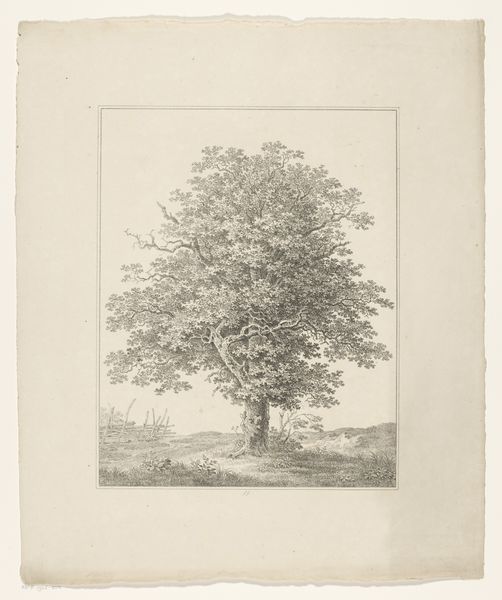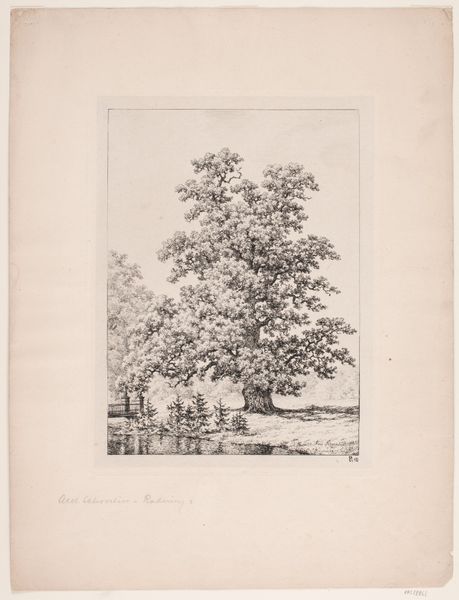
Gezicht op het Diaconie Oude Vrouwen- en Mannenhuis te Amsterdam 1768 - 1783
0:00
0:00
Dimensions: height 285 mm, width 380 mm
Copyright: Rijks Museum: Open Domain
Caspar Jacobsz. Philips created this print of the Diaconie Old Women's and Men's Home in Amsterdam. Dominating the scene is a large tree, its canopy obscuring the building behind. Trees, in art, are often symbols of life, growth, and interconnectedness. Yet, in this context, the tree's imposing presence carries a more complex meaning. Consider the ancient "Tree of Life," a motif found across cultures, representing the connection between the earthly and the divine. But the tree can also stand for the burdens of time, its rings marking the passage of years, much like the residents of the old age home. The tree as a symbol has seen many iterations. In some contexts, it represents wisdom and knowledge; in others, it reflects the cycle of decay and rebirth. This duality mirrors the human experience of aging, where wisdom and frailty coexist. Its presence may subconsciously evoke contemplation on mortality and the passage of time, engaging us in a deep, internal dialogue about our own lives and destinies. The symbolism of the tree represents a cyclical progression, evolving and taking on new meanings across history.
Comments
No comments
Be the first to comment and join the conversation on the ultimate creative platform.
